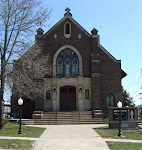On the day he abdicated, Pope announced canonisation of 800 martyrs slaughtered for their Faith by Muslim troops
On that day in mid-summer in the early hours of the morning, a Turkish fleet appeared of 90 galleys and 66 other vessels. The fleet transported an army of 18,000 soldiers under the command of Gedik Ahmed Pasha, a commander of Sultan Mehmed II the Conqueror, who in 1451 at the age of only 21 years, took over the reign of the Ottoman Empire.
In June 1480, he directed his work of conquest against the real Rome after the conquest of the island of Rhodes with the stubborn and heroic resistance of the Knights of St. John (now Malta) had failed The Turkish fleet sailed westwards and targeted Otranto on the southern Adriatic. The southeastern city of Italy with about 6,000 inhabitants at that time was an important port between East and West.
After a fifteen day siege the Turkish attackers on 11 August succeeded through concentrated artillery fire to breach the defensive wall, through which they could enter the castle. Gedik Ahmed Pasha ordered the killing of all the male inhabitants over 15 years, while women and children were enslaved. Some of the inhabitants managed to take refuge before the massacre with the clergy in the city's cathedral. There the Turks met Archbishop Stefano Pendinelli with the Cross in his hand raised towards them who asked the attackers to spare the lives of the people in the house of God, and accept Christ as their Saviour. He was killed in a particularly brutal manner, his head cut off, and this was carried on a spear as a trophy through the streets of the city. The commander of the Castle team was sawn in two while still alive.
Gedik Ahmed Pasha demanded the at least 800 Christians in the cathedral to convert to Islam, for which he gave them a night to think. On 12 August, all refused, among them the elderly tailor Antonio Pezzulla called Primaldo. He gave Gedik Ahmed Pasha the response of the trapped: "All of us who believe in Jesus Christ, the Son of God and our Savior, are ready to die a thousand times for him."
For the rest of the article click here: Catholic Church Conservation




